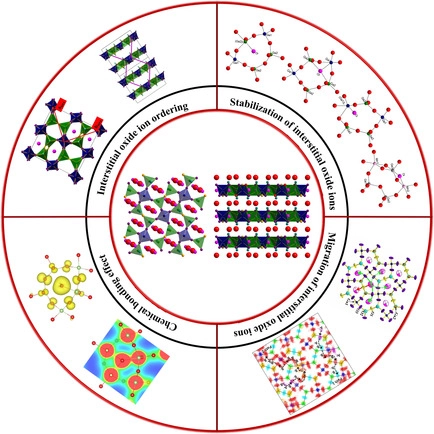Ask for a reprint
email :
* Give your email
2020
ACL
|
L.Zhou, J.Xu, M.Allix, X.Kuang, 'Development of Melilite-Type Oxide Ion Conductors', The Chem. Record 20 1-13 (2020) doi:10.1002/tcr.202000069
Lowering the operating temperature of solid oxide fuel cells (SOFCs) requires high performance oxide ion conductor electrolytes. Recently tetrahedra‐based structures have been attracting considerable attention for oxide ion conductor development, among which the layered tetrahedral network melilite structure appears particularly interesting owing to its remarkable capability to accommodate and transport interstitial oxide ions, compared with isolated tetrahedral anion structures. Stabilization and migration mechanisms of interstitial oxide ions in melilites have been systematically investigated using local structural relaxation from both electrostatic Coulomb interaction and chemical bonding aspects based on atomic and electronic structures respectively using experimental and theoretical approaches. These reveal cationic size and chemical bonding effects on stabilization and migration mechanisms of interstitial oxide ions. Lately, full crystallization from glass, an innovative synthesis method, was employed to produce new metastable melilite oxide ion conductors which are inaccessible using classic solid state reaction owing to cationic size effect. Finally, the thermal and chemical stability at low temperature and the high oxide ion conductivity of the best melilite oxide ion conductors based on LaSrGa3O7 are likely to provide real possibilities of applications of melilite‐type electrolytes in SOFCs and other related devices.
|

|